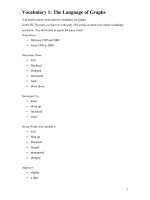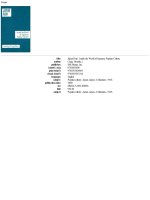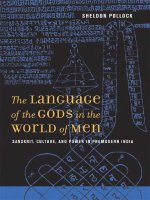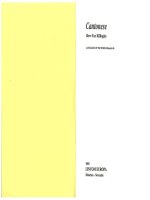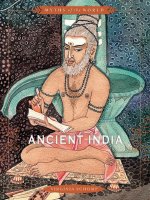the language of the gods in the world of men
Bạn đang xem bản rút gọn của tài liệu. Xem và tải ngay bản đầy đủ của tài liệu tại đây (3.13 MB, 705 trang )
A
BOOK
The Philip E. Lilienthal imprint
honors special books
in commemoration of a man whose work
at the University of California Press
from 1954 to 1979
was marked by dedication to young authors
and to high standards in the field of Asian Studies.
Friends, family, authors, and foundations have together
endowed the Lilienthal Fund, which enables the Press
to publish under this imprint selected books
in a way that reflects the taste and judgment
of a great and beloved editor.
The publisher gratefully acknowledges the generous
contributions to this book provided by the Philip E.
Lilienthal Asian Studies Endowment Fund of the
University of California Press Foundation, which is
supported by a major gift from Sally Lilienthal,
and by The University of Chicago.
The Language of the Gods
in the World of Men
Serpentine Scimitar of King Uday1ditya (Mah1k1leévara Temple,
Ujjain, early twelfth century; photo courtesy Archaeological
Survey of India); see p. 177.
The Language of the Gods
in the World of Men
Sanskrit, Culture, and Power
in Premodern India
Sheldon Pollock
UNIVERSITY OF CALIFORNIA PRESS
Berkeley Los Angeles London
University of California Press, one of the most distinguished
university presses in the United States, enriches lives around the
world by advancing scholarship in the humanities, social sciences,
and natural sciences. Its activities are supported by the UC Press
Foundation and by philanthropic contributions from individuals
and institutions. For more information, visit www.ucpress.edu.
University of California Press
Berkeley and Los Angeles, California
University of California Press, Ltd.
London, England
© 2006 by The Regents of the University of California
Library of Congress Cataloging-in-Publication Data
Pollock, Sheldon I.
The language of the gods in the world of men : Sanskrit,
culture, and power in premodern India / Sheldon Pollock.
p. cm.
“Philip E. Lilienthal Asian studies imprint.”
Includes bibliographical references and index.
isbn 0–520–24500–8 (cloth : alk. paper)
1. Sanskrit literature—To 1500—Political aspects. 2. Sanskrit
literature—To 1500—History and criticism. 3. Indic literature—
To 1500—History. 4. Indic literature—To 1500—Political
aspects. 5. Politics and literature—India—History. 6. Literature
and society—India—History. I. Title.
pk2907.p65p65 2006
891a'.209—dc22 2005013461
Manufactured in the United States of America
13 12 11 10 09 08 07 06 05 04
10987654 321
This book is printed on New Leaf EcoBook 60, containing 60% post-
consumer waste, processed chlorine free; 30% de-inked recycled
fiber, elemental chlorine free; and 10% FSC-certified virgin fiber,
totally chlorine free. EcoBook 60 is acid-free and meets the minimum
requirements of ansi/astm d5634–01 (Permanence of Paper).
For my mother,
Elsie Russ Pollock
contents
preface and acknowledgments xi
Introduction 1
Culture, Power, (Pre)modernity 2
The Cosmopolitan in Theory and Practice 10
The Vernacular in Theory and Practice 19
Theory, Metatheory, Practice, Metapractice 30
part 1. The Sanskrit Cosmopolis
Chapter 1. The Language of the Gods
Enters the World 39
1.1 Precosmopolitan Sanskrit: Monopolization and Ritualization 39
1.2 From Resistance to Appropriation 51
1.3. Expanding the Prestige Economy of Sanskrit 59
Chapter 2. Literature and the Cosmopolitan
Language of Literature 75
2.1. From Liturgy to Literature 75
2.2. Literary Language as a Closed Set 89
2.3. The Final Theory of Literary Language: Bhoja’s Poetics 105
Chapter 3. The World Conquest and Regime
of the Cosmopolitan Style 115
3.1. Inscribing Political Will in Sanskrit 115
3.2. The Semantics of Inscriptional Discourse:
The Poetics of Power, M1lava, 1141 134
3.3. The Pragmatics of Inscriptional Discourse:
Making History, Kaly1âa, 1008 148
Chapter 4. Sanskrit Culture as Courtly Practice 162
4.1. Grammatical and Political Correctness:
The Politics of Grammar 162
4.2. Grammatical and Political Correctness: Grammar Envy 177
4.3. Literature and Kingly Virtuosity 184
Chapter 5. The Map of Sanskrit Knowledge
and the Discourse on the Ways of Literature 189
5.1. The Geocultural Matrix of Sanskrit Knowledge 189
5.2. Poetry Man, Poetics Woman,
and the Birth-Space of Literature 200
5.3. The Ways of Literature: Tradition,
Method, and Stylistic Regions 204
Chapter 6. Political Formations and Cultural Ethos 223
6.1. Production and Reproduction of Epic Space 223
6.2. Power and Culture in a Cosmos 237
Chapter 7. A European Countercosmopolis 259
7.1. Latinitas 259
7.2. Imperium Romanum 274
part 2. The Vernacular Millennium
Chapter 8. Beginnings, Textualization,
Superposition 283
8.1. Literary Newness Enters the World 283
8.2. From Language to Text 298
8.3. There Is No Parthenogenesis in Culture 318
Chapter 9. Creating a Regional World:
The Case of Kannada 330
9.1. Vernacularization and Political Inscription 330
9.2. The Way of the King of Poets and the Places of Poetry 338
9.3. Localizing the Universal Political: Pampa Bh1ratam 356
9.4. A New Philology: From Norm-Bound Practice
to Practice-Bound Norm 363
Chapter 10. Vernacular Poetries and Polities
in Southern Asia 380
10.1. The Cosmopolitan Vernacularization
of South and Southeast Asia 380
10.2. Region and Reason 397
10.3. Vernacular Polities 410
10.4. Religion and Vernacularization 423
Chapter 11. Europe Vernacularized 437
11.1. Literacy and Literature 437
11.2. Vernacular Anxiety 452
11.3. A New Cultural Politics
/ 460
Chapter 12. Comparative and Connective
Vernacularization 468
12.1. European Particularism and Indian Difference 468
12.2. A Hard History of the Vernacular Millennium 482
part 3. Theory and Practice of Culture and Power
Chapter 13. Actually Existing Theory
and Its Discontents 497
13.1. Natural Histories of Culture-Power 497
13.2. Primordialism, Linguism, Ethnicity, and
Other Unwarranted Generalizations 505
13.3. Legitimation, Ideology, and Related Functionalisms 511
Chapter 14. Indigenism and Other Culture-Power
Concepts of Modernity 525
14.1. Civilizationalism, or Indigenism with Too Little History 525
14.2. Nationalism, or Indigenism with Too Much History 539
Epilogue. From Cosmopolitan-or-Vernacular
to Cosmopolitan-and-Vernacular 567
appendix a
A.1 Bhoja’s Theory of Literary Language
( from the çóãg1raprak1éa) 581
A.2 Bhoja’s Theory of Ornamentation
( from the SarasvatEkaâ•h1bharaâa) 583
A.3 çrEp1la’s Bilpaãk Praéasti of King JayasiÅha Siddhar1ja 584
A.4 The Origins of Hemacandra’s Grammar
( from Prabh1candra’s Prabh1vakacarita) 588
A.5 The Invention of K1vya
(from R1jaéekhara’s K1vyamEm1Ås1) 591
appendix b
B.1 Approximate Dates of Principal Dynasties 597
B.2 Names of Important Peoples and Places with Their
Approximate Modern Equivalents or Locations 597
publication history 601
bibliography 603
index 649
maps follow page xiv.
preface and acknowledgments
A number of the ideas in this book began to germinate as long ago as 1990,
when I delivered my inaugural lecture as Bobrinskoy Professor of Sanskrit
and Indic Studies at the University of Chicago. Three years later I reformu-
lated that presentation as a series of lectures at the Collège de France. A year’s
fellowship under the auspices of the National Endowment for the Human-
ities and the American Institute of Indian Studies, 1995–1996, enabled me
to work closely with the greatest living scholar in the field of Old Kannada,
T. V. Venkatachala Sastry, professor emeritus of the Institute of Kannada Stud-
ies, University of Mysore. It was only then that I began to conceive of this
book the way it is today, having come to understand more fully than ever be-
fore that just as the history of Sanskrit makes less sense the less we under-
stand of its relationship to local forms of culture and power, so the vernac-
ular revolution in second-millennium South Asia makes less sense the less
we understand of the shaping role played by Sanskrit.
Also in the mid-1990s, I began a collaborative research project involving
seventeen scholars on three continents, the end result of which was the vol-
ume Literary Cultures in History: Reconstructions from South Asia. A number of
the central ideas for this project emerged out of my earlier work on Sanskrit
and my new interests in Kannada. The Literary Cultures project claimed large
amounts of my time and effectively stalled my personal research, but the ques-
tions it raised were obviously of fundamental concern to this study. I learned
much from my colleagues, and traces of their learning may be found
throughout this book.
The issues raised here are of such scope that I could have studied forever
and still not have discovered, let alone mastered, all of the relevant material
in all the relevant languages. The book was long enough in coming, but it
would never have been finished unless I stopped reading for it, which I did
xi
when completing the first full draft of the book in 2001–2. It has therefore
not always been possible to take complete account of specialist monographs
and articles that have been published since.
With respect to the spelling of names, the standard transcription schemes
for Kannada and other vernacular forms are used when Kannada and other
vernacular authors and works are under discussion: thus I write “K;sir1ja”
rather than “Keéir1ja,” “N1garvarma” rather than “N1gavarman,” but “Some-
évara” and not “SOmeévara,” since he wrote his M1nasoll1sa in Sanskrit. Names
of languages and scripts are given without diacritics. Place names cited from
texts are typically permitted to retain the variation they show in the texts
themselves; no attempt to impose uniformity has been made. Providing mod-
ern names as equivalents of premodern ones is often problematic not only
cognitively (where, after all, are the borders of Jamb[dvEpa?) but also polit-
ically (where, after all, are the borders of Kannaban1bu?). In fact, the con-
trast between the reductive cartographic exactitude of modernity and the
accommodation of nominal pluralism in premodernity (where the slogan
seems almost to have been: Let there be many Gaãg1s!) speaks to one of the
core problems of this book. I have nonetheless decided to include modern
names (and without diacritics) when there is not too much uncertainty about
the identification, in order to give at least some local habitation to what for
many readers might otherwise be a blank abstraction. These are relegated
to an appendix for fear of clogging the text even further. I use “India” and
“South Asia” more or less interchangeably, but “southern Asia,” when South-
east Asia is specifically meant to be included.
Texts are cited in the original as a rule only when the language itself is
the point of the discussion, the translation problematic, or the text rare
enough not to be generally available to scholars. To have done otherwise
would have swollen this book well beyond its already distended present state.
In a work like this, in which the problematics, while coherent and
unified—at least as I see them—are incredibly complex, the author cannot
possibly be an authority in every area of literary culture examined, and he
must to some degree rely on the learning of his colleagues. In addition to
Venkatachala Sastry, with whom I carried on daily conversations for a year
that is a precious memory for me, I must thank a number of scholars of very
different orientations. Allison Busch graciously shared her deep knowledge
of Brajbhasha literature with me. She also read the final draft of the manu-
script in its entirety and made countless suggestions for improvement. The
late Norman Cutler discussed many issues of early Tamil literary history with
me over the decade and a half in which we were colleagues, until his pre-
mature death deprived the world of Tamil scholarship of this learned and
gentle man. Anne Feldhaus drew on her remarkable knowledge of early
Marathi to help me with a number of thorny questions in the inscriptional
record. Gérard Fussman, preeminent scholar of early Indian epigraphy, was
xii preface and acknowledgments
my host at the Collège de France, and in the years since my visit I have con-
tinued to profit greatly from our discussions on the complicated historical
issues addressed in chapter 1. The Latinist Robert Kaster, a scholar whose
generosity is as deep as his learning, helped me think more sharply about
the “countercosmopolis” (a formulation for which he should not be held re-
sponsible) described in chapter 7. Roger Wright, the pathbreaking socio-
philologist of early Romance, was always ready with scholarship, criticism,
and great goodwill when I raised questions concerning the materials in chap-
ter 11—a chapter also read, with a critical eye for which I am very grateful, by
the historian Robert Moore.
Arjun Appadurai and Dipesh Chakrabarty have been the closest of col-
leagues, friends, and conversation partners for going on two decades. While
we have sometimes agreed amicably to disagree on certain questions, their
perspectives have proved invaluable to me, especially with regard to the think-
ing that went into part 3.
I am also grateful to two outside readers for University of California Press
for their suggestions for improving the work.
My former student Steven Heim helped me enormously in preparing the
materials that Bill Nelson transformed into the splendid maps that grace this
book.
Research assistants who aided me over the years include Prithvidatta Chan-
drashobhi, Xi He, Guy Leavitt, Lawrence McCrea, and Samuel Wright.
To Reed Malcolm, my editor at the University of California Press, I owe
an immense debt of gratitude. It was Reed who insisted years ago that I begin
this book, and who showed great patience and support in the period of re-
search and writing. When in the end he got far more than he had ever bar-
gained for, his gentle prodding and understanding help me turn this mega-
lon biblion into what I hope is not so megalon a kakon.
At the University of California Press, Cindy Fulton was the perfect project
editor, moving this complicated work along with great proficiency, and Car-
olyn Bond, the perfect copyeditor, showing unflagging care as well as infinite
patience.
Each of the following friends and colleagues contributed in various ways,
and I regret I do not have the space to explain how valuably: U. R. Anan-
thamurthy, Benedict Anderson, Johann Arnason, Rick Asher, Homi Bhabha,
Bronwen Bledsoe, Carol Breckenridge, Johannes Bronkhorst, Steven Collins,
Tony Day, the late Edward Dimock, Jr., Shmuel N. Eisenstadt, Matthew Kap-
stein, Sudipta Kaviraj, Stuart McGregor, Christopher Minkowski, Kathleen
Morrison, Janel Mueller, Christian Novetzke, V. Narayana Rao, Susanne and
Lloyd Rudolph, Joseph Schwartzberg, Bulbul Tiwari, Ananya Vajpeyi, Blake
Wentworth, Björn Wittrock, Dominik Wujastyk, Yogendra Yadav.
Warm thanks go to Howard Bass and Elizabeth Voyatzis, whose affection
and companionship during a sabbatical in 2002 enabled me to complete
preface and acknowledgments xiii
the first full draft of this book. I am grateful, too, to my daughters: Mica, for
her helpful conceptual and stylistic criticism on some earlier essays that
formed the background of this book, and Nira, for her patient explanation
of some issues of evolution that troubled me in chapter 13.1, and both for
their loving support over the long period of this work’s gestation.
In closing, I remember two men of Karnataka whose deaths took away
not only friends but teachers: A. K. Ramanujan, with whom I had the won-
derful if all too brief pleasure of exchanging Sanskrit for Kannada instruc-
tion in the early 1990s, and D. R. Nagaraj, from whom I learned how great
are the stakes of the knowledge of culture-power, yet how joyful, too, such
knowledge can be.
xiv preface and acknowledgments
0
0 250 500 Kilometers
100 200 300 Miles
V
a
i
k
a
i
R
.
K
a
v
e
r
i
R
.
K
r
s
n
a
R
.
G
o
d
a
v
a
r
i
R
.
T
a
p
t
i
R
.
N
a
r
m
a
d
a
R
.
L
a
u
h
i
t
y
a
R
.
G
a
n
g
a
R
.
S
i
n
d
h
u
R
.
Y
a
m
u
n
a
R
.
O
x
u
s
R
.
S
U
R
A
S
E
N
A
ANGA
BAHLIKA
GANDHARA
KANDAHAR
PANJAB
SWAT
KASMIRA
RAJASTHAN
MULTAN
KACCHA
MARWAR
MEWAR
MEDAPATA
DASARNA
AVANTI
MALAVA
GURJARA-
DESA
L
A
T
A
MAHARASTRA
VIDARBHA
ANDHRA
K
A
L
I
N
G
A
ODRA
KARNATAKA
LANKA
VATSA
MAGADHA
VIDEHA
MITHILA
GAUDA
V
A
N
G
A
KAMARUPA
NEPALA
KURU-
KSETRA
JALANDHARA
B
I
N
D
U
S
A
R
A
S
A
U
V
I
R
A
S
I
N
D
H
P
A
Ñ
C
A
L
A
K
O
S
A
L
U
T
K
A
L
A
S
A
M
A
N
T
A
T
A
H
K
O
T
T
U
R
A
D
R
A
V
I
D
A
K
E
R
A
L
A
T
U
L
U
N
A
D
U
K
O
N
K
A
N
A
S
I
M
H
A
L
A
M
A
T
S
Y
A
M
A
L
A
Y
A
S
A
H
Y
A
M
N
T
S
V
I
N
D
Y
A
M
N
T
S
M
AHE
ND
RA
M
NTS
R
KSA
V
AT
M
N
T
S
Mt. Kailasa
P
A
R
I
Y
A
T
R
A
M
N
T
S
Mt. Girnar
S
R
I
P
A
R
V
A
T
A
M
N
T
S
´
´
´
´
´
´
´
SAURASTRA
Map 1. Premodern South Asia: Regions and Physical Features
0
0 250 500 Kilometers
100 200 300 Miles
B
haut
ta
Yavanas
Balkh
Kabul
Purusapura
Pravarapura
Dvaraka
Junagarh
Khambhat
Somanatha
Anahilapataka
Srimala
Dasapura
Ujjayini
Tripuri
Purusottama
Konarka
Gaya
Varanasi
Delhi
Ayodhya
Kanyakubja
Badarika
Mathura
Haridvara
Kedara
Kausambi
Gopacala
Campa
Bhaktapur
Pragjyotisa
Viraja
Pataliputra
Patan
Ekamra
Kalyana
Tañcavur
Bharukaccha
Dhara
Devagiri
Pratisthana
Badami
Srisaila
Kañcipuram
Ramesvaram
Hampi
Maturai
Valabhi
Mahismati
Vatsagulma
Vemulavada
Veng i
Warangal
Vijayavada
Manyakheta
Dvarasamudra
Brahmagiri
Gangaikondacolapuram
Cidambaram
GHORIDS
PRATIHARAS
PALAS
GUPTAS
SAKAS
VAKATAKAS
CEDI
MALLAS
SENAS
CALUKYAS
C
AL
UKY
AS
C
E
R
A
S
C
O
L
A
S
P
A
L
L
A
V
A
S
IK
S
V
A
K
U
M
A
U
R
Y
A
S
PARAMARAS
WESTERN
CALUKYAS
HOYSALAS
VIJAYANAGARA
RA
STRAKU
TA
GURJARA
YADAVAS
S
A
T
A
V
A
H
A
N
A
C
A
ULUKY
A
S
A
K
A
S
G
H
A
Z
N
A
V
I
D
S
G
A
N
G
A
K
A
D
A
M
B
A
S
E
A
S
T
E
R
N
G
A
N
G
A
S
K
U
S
A
N
A
S
E
A
S
T
E
R
´
´
´
´
´
´
´
´
OKAVAS
PANTIYAS
Map 2. Premodern South Asia: Dynasties and Cities
SRIPARVATA
MNTS
M
a
l
a
p
r
a
b
h
a
R
.
Karuvur
Maturai
Tañcavur
Talakad
Melkote
Basaralu
Sravanabelgola
Halmidi
Dvarasamudra
Velapura
Nangali
Srngeri
Talagunda
Sasakapura
Brahmagiri
Hampi
Puligere
Gadag
Ittagi
Srisaila
Manyakheta
Kalyana
Aihole
Muyangi
Gavimath
Kopana
Omkumda
Kisuvolal
Badami
Vanavasi
Gokarna
Barakanur
Bayalanadu
K
r
s
n
a
R
.
T
u
n
g
a
b
h
a
d
r
a
R
.
K
a
v
e
r
i
R
.
V
a
i
k
a
i
R
.
BA NAVAS I
K
O
N
K
A
N
A
AL
U
P
A
GANGAVADI
RAYALASIMA
T
U
L
U
N
A
D
U
K
O
N
G
U
HOYSALAS
VIJAYANAGARA
CALUKYAS
WESTERN CALUKYAS
R
A
S
T
R
A
K
U
T
A
S
K
A
D
A
M
B
A
S
G
A
N
G
A
S
C
O
L
A
S
´
´
´
´
´
´
´
PANTIYAS
Map 3. Premodern Karnataka
SAILENDRA
I
r
r
a
w
a
d
y
R
.
Tonl é
Sap
P
r
e
R
u
p
M
e
k
o
n
g
R
.
´
´
MALAVA(?)
DASARNA
Pagan
Sukhotai
Ayutthaya
Vat Phu/
My-son
Vijaya
Kauthara
Panduranga
Borobudur
Srivijaya
Ligor
Pragawati
(Prayagavati?)
P
A
G
A
N
FUNAN
K
H
M
E
R
L
A
N
D
C
H
A
M
P
S
R
I
V
I
J
A
Y
A
´
SINGHASARI
KURUKSETRA
´
DAI VIET
ANNAM
D
V
A
R
A
V
A
T
I
A
M
A
R
A
V
A
T
Praga (Prayaga?) R.
Ganga R.
KEDU
M
A
L
A
Y
U
Prambanan
Majapahit
Angkor
Mebon
YAVADVIPA(?)
KADIRI
Map 4. Premodern Southeast Asia
Introduction
I feel that if language is understood as an element of culture, and thus
of general history, a key manifestation of the “nationality” and “popular-
ity” of the intellectuals, this study is not pointless and merely erudite.
gramsci, selections from Cultural Writings
Das Sein verstimmt das Bewusstsein.
graffito, East Berlin, November 1989
This book is an attempt to understand two great moments of transforma-
tion in culture and power in premodern India. The first occurred around
the beginning of the Common Era, when Sanskrit, long a sacred language
restricted to religious practice, was reinvented as a code for literary and po-
litical expression. This development marked the start of an amazing career
that saw Sanskrit literary culture spread across most of southern Asia from
Afghanistan to Java. The form of power for which this quasi-universal San-
skrit spoke was also meant to extend quasi-universally, “to the ends of the
horizons,” although such imperial polity existed more often as ideal than as
actuality. The second moment occurred around the beginning of the sec-
ond millennium, when local speech forms were newly dignified as literary
languages and began to challenge Sanskrit for the work of both poetry and
polity, and in the end replaced it. Concomitantly new, limited power for-
mations came into existence. Astonishingly close parallels to these processes,
both chronologically and structurally, can be perceived in western Europe,
with the rise of a new Latin literature and a universalist Roman Empire, and
with the eventual displacement of both by regionalized forms. But the par-
allels are complemented by differences, too, in the specific relationships be-
tween culture and power in the two worlds. Today, the vernacular epoch that
began in India and Europe a millennium ago seems to be mutating, if not
ending, as the local cultures then created are challenged by a new and more
coercive globalism. It may be only now, therefore, that we are able to identify
the shape of these past events and to ask whether from their old differences
we might learn any new ways of acting in the world.
This is a very large set of issues—the book might have carried as a sec-
1
ond subtitle (if it hadn’t already been taken by Charles Tilly) “A Study of Big
Structures, Large Processes, and Huge Comparisons.” A map of the inquiry
into these structures, processes, and comparisons with respect to both their
logic and their substance is certainly in order. So is some discussion of the
basic terms employed. Three key words, “culture,” “power,” and “(pre)moder-
nity,” can be reviewed briskly, since rough-and-ready understandings of
these categories have proved adequate for organizing this historical study.
In fact, going with rather than against the dominant conceptual grain has
seemed a methodological prerequisite, since the dominant conceptualiza-
tions in both Europe and South Asia have been the historically consequen-
tial ones; whether they are true in some transcendental sense is a secondary
issue. More clarification is needed for two other core terms of this study, “cos-
mopolitan” and “vernacular,” as well as for the culture-power critique that
constitutes the grander objective of this historical reconstruction.
culture, power, (pre)modernity
There should be nothing problematic about using the term “culture” to refer
specifically to one of its subsets, language, and especially language in rela-
tion to literature. Sometimes the collocation “literary culture” is used here
to describe a set of dynamic practices by which languages are produced as
distinct entities and literatures created within a context of social and politi-
cal life that helps to shape these practices even while being shaped by them.
In premodern India it was in the activities of literary culture and the repre-
sentations of literature, as much as anywhere else, that power and culture
came to be constituted as intelligible facts of life.
What should be problematic, however, at least from the vantage point of
contemporary theory, is claiming to know and define “literary.” There are
good reasons for arguing—and many have argued this for the past two decades
or more—that anything can be literature; that the term needs to be under-
stood pragmatically rather than ontologically, as pointing to ways certain texts
are used rather than defining what those texts inherently and essentially are.
Yet from the vantage point of premodern South Asia, most certainly not
everything could be k1vya, the text genre for which the closest English trans-
lation is poetry and literary prose; and with respect to the history of k1vya,
contemporary arguments about the nonessentialized nature of literature
show themselves to be unhistorical essentializations.
1
This raises a point of
method basic to this study, which might best be explained by the distinction
Indian philosophers draw between p1ram1rthika sat and vy1vah1rika (or, saÅ-
vóti) sat, or what the eighteenth-century Italian thinker Vico called verum and
2 introduction
1. Derrida 1992: especially 40–49, illustrates this well.
certum. The prior term points toward the absolute truth of philosophical rea-
son, the second, toward the certitudes people have at different stages of their
history that provide the grounds for their beliefs and actions.
2
It is these worka-
day truths, these certitudes, that are granted primacy in this book, in the con-
viction that we cannot understand the past until we grasp how those who made
it understood what they were making, and why. By the standards of vy1vah1rika
sat, literature in the world of premodern South Asia was radically differenti-
ated from nonliterature for all participants in literary culture, writers, critics,
and audiences alike. What substantively constitutes k1vya and how literari-
ness comes into being were naturally matters of ongoing debate, and various
elements were proposed as the essence of k1vya. But the fact that k1vya has
an essence—a “self” or “soul,” as it was phrased—something marking it as
different from every other language use, was never doubted by anyone.
At the heart of the premodern Indian conception is a distinction not
unknown to modern literary theory, though variously formulated: between
expression and content, performance and constatation, imagination and
information. In Heidegger’s philosophical aesthetics, a text’s “workly”
dimension—the aesthetic object’s ability to reveal “a particular being, dis-
closing what and how it is”—may thus be differentiated from its documen-
tary dimension. The same distinction underlies the different strategies phe-
nomenologists identify for generating possible meanings in different kinds
of texts: workly and documentary texts may be distinguished by the “degree
to which one expands on [their] schematic structure to derive an expanded
interpretation,” or by the “kind and level of self-consciousness with which
one checks one’s reading against textual form and standards of interpreta-
tion.”
3
Precisely these demarcations were made both theoretically and prac-
tically in premodern South Asia. At the high-water mark of Sanskrit literary
theory in the eleventh century, the principal dichotomy in discourse was be-
tween k1vya and é1stra, or literature and science; a comparable distinction
was operationalized in inscriptions by the use of one language for the ex-
pressive and imaginative, and another for the contentual and informational.
In general, then, there is broad enough agreement on the differentia specifica
of literature and nonliterature to make modern Western distinctions largely
unobjectionable for describing the history of South Asian literary cultures.
Literature was distinguished not only by its content but also by its form.
One thing that could not be k1vya was the purely oral. Although the fact is
introduction 3
2. On the distinction in India see Kapstein 2001: 215ff.; on Vico, Auerbach 1967: 238,
245, 265.
3. See respectively Lotman and Uspensky 1978, especially 217ff.; Austin 1962, especially
3, 6, 133 ff., and Kloss 1967: 33. For Heidegger’s das Werkhaftes des Werkes see 1960: 30. LaCapra
introduces the useful complement of the “documentary” (1983: 30). For Ingarden’s phe-
nomenology I reproduce Hanks’s typology (1996: 122–28).
rarely appreciated, not only is k1vya defined practically if not explicitly by writ-
ing for us modern readers who cannot know an unwritten literary past, but
it was so for the premodern actors themselves. The invention of literacy and
the growth of manuscript culture occurred in India a little before the begin-
ning of the Common Era; from that point on, writing, the symbolic elevation
of what is written, and the internal transformations the literary text under-
goes by the very fact of being written down would become increasingly promi-
nent features of literary culture. No convenient term exists in English for the
breakthrough to writing; I will call it “literization” (by analogy with the Ger-
man Verschriftlichung). The written differs from the oral in a variety of ways.
For one thing, even in cultures like those of premodern South Asia that hyper-
value orality—an attitude possible only given the presence of literacy, by the
way—writing claims an authority the oral cannot. The authorization to write,
above all to write literature, is no natural entitlement, like the ability to speak,
but is typically related to social and political and even epistemological privi-
leges (chapters 8.2, 11.1). For another, writing enables textual features far in
excess of the oral; for literature it renders the discourse itself a subject for dis-
course for the first time, language itself an object of aestheticized awareness,
the text itself an artifact to be decoded and a pretext for deciphering.
4
In ad-
dition, writing makes possible the production of a history of a sort the oral is
incapable of producing. These and other features mark the written as a dis-
tinct mode of cultural production and communication. It is a core compo-
nent in the process of vernacularization explained in part 2; without appre-
ciating the role of writing, vernacularization cannot even be perceived as a
historical phenomenon. Nietzsche was certainly right to locate in the origin
of such objektive Schriftsprache (objective written language) a “prejudice of rea-
son” in favor of “unity, identity, permanence, substance”; indeed, this is some-
thing fully borne out by the history of vernacular languages in South Asia.
But he was wrong to judge as an error literary history’s concern with written
texts in preference to spoken linguistic art.
5
The first development made the
second inevitable. Written literature in premodern South Asia, as in western
Europe, undoubtedly preserved features realized only in oral performance,
and listening to rather than reading literature long remained the principal
mode of experiencing it. Yet with the introduction of writing, a new bound-
ary was drawn between the purely oral and k1vya. Writing was never essential
to literature—until literature became literature.
It is not I, then, who denies what several generations of scholars have
argued—that something reasonable people would call literature can be pro-
4 introduction
4. See the discussion of “entextualization” in Bauman and Briggs 1990: 72 ff., and Silver-
stein and Urban 1996: 1–17. An interesting theoretical view of the passage from oral to liter-
ate is Bourdieu 1990: 94–105; the fullest field study, at least of Indian materials, is Honko 1998.
5. On Nietzsche see Nyíri 1996: 73–75.



